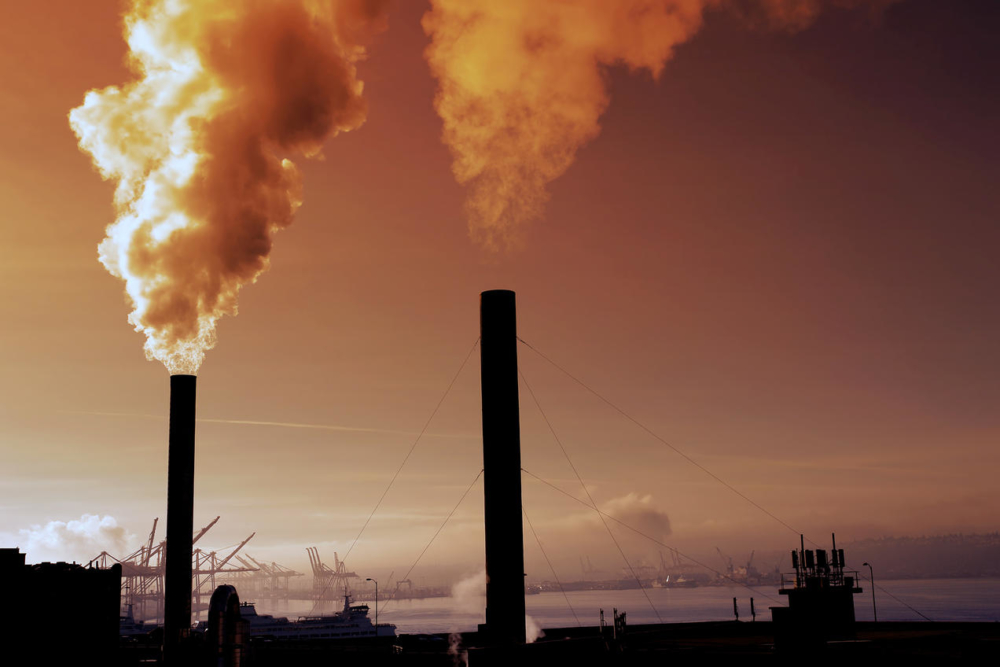Air Pollution in Connecticut
Sources: American Lung Association; Hartford Courant;
Fairfield County is one of the most polluted countries in the nation, according to the American Lung Association’s 2022 “State of Air” report. This is the 23rd year that the American Lung Association has issued this report, and, unfortunately, Fairfield County is still rated as “F” for air quality.
Though we had the best reading for ozone levels in the American Lung Association’s State of the Air report to date, Fairfield County has the highest ozone readings in the eastern U.S. The average number of unhealthy days for ozone was more than five times the minimum number for it to earn an “F” grade.
We are not alone in having failing grades for air quality, Middlesex, New London, and New Haven Counties maintained “F” grades. Litchfield maintained its C grade. All counties reported improved levels of ozone, with the exception of New Haven, which remained the same. Granted, this is certainly nothing to brag about.
The grades for ozone and short-term particle pollution were based on a weighted average calculation of data collected over a three-year period. U.S. Environmental Protection Agency’s Air Quality System collected the sample at monitoring sites across the country.
Ruth Canvoi, director of advocacy for the American Lung Association, said that this data is extremely relevant to Connecticut, as Fairfield County remains one of the most polluted counties in the country. “Clearly we have a lot of work to do in Connecticut,” she said.
“Connecticut residents should be aware that we’re breathing unhealthy air, driven by emissions from power plants and extreme heat as a result of climate change, placing our health and lives at risk,” Ruth Canovi, said of the new report.
The report indicates that this may be because of the amount of transportation emissions that moves through Fairfield County from other states, including emissions from medium and heavy-duty trucks. A fact that lends validation to those Connecticut residents who have always blamed New Jersey, New York, and Massachusetts for our air quality.
Particle and ozone air pollution continue to impact communities throughout the United States, with some more heavily burdened.
- A new report from the American Lung Association finds that air pollution is increasingly becoming more of a problem for people In the U.S.
- Emissions related to fossil fuels have decreased in U.S., but climate change has led to worse air quality.
- More than 40 percent of Americans live in places with unhealthy levels of particle pollution or ozone, according to the annual report.
The organization’s “State of the Air” report for 2022 also shows that air pollution is becoming increasingly problematic for many Americans. Over two million more people were breathing unhealthy air in their community compared to last year’s report.
Dr. David Hill, a Connecticut pulmonologist and chair of the Northeast Board of the American Lung Association, said Connecticut has over 95,000 kids with pediatric asthma, over 305,000 adults with asthma, and over 164,000 adults with chronic obstructive pulmonary disease, or COPD.
In addition, during the three years covered by the latest report, Americans experienced more “very unhealthy” and “hazardous” air quality days than previously during the report’s two-decade history.
“The fact that we see an increase in the number of Americans that are impacted by particulate pollution compared to last year really demonstrates that air quality remains an important concern for the public,” said Dr. Meredith McCormack, an ALA national spokesperson and a pulmonary and critical care physician at Johns Hopkins University in Baltimore.
Top of Form
Canvoi said that the purpose of the report is to put the complex numbers and figures that are collected into a frame that everyone can understand. In tandem with the education, research, and advocacy efforts that the American Lung Association does, Canvoi said she hopes there will be legislative change to follow.
“We do a lot of policy work at the federal, state, and local level. It’s imperative to have strong laws across the country,” she said.
What is Connecticut doing about clean air?
The state is already taking steps to reduce harmful emissions.
Gov. Ned Lamont has proposed legislation that seeks to adopt stronger emissions standards for medium and heavy-duty vehicles, which account for as much as 53% of nitrogen oxide emissions in Connecticut, despite being only 6% of the on-road vehicle fleet.
Adopting these standards – which have already been adopted by New York, New Jersey, and Massachusetts (well I guess we can’t place the blame on them anymore!!) – would not mandate that Connecticut businesses purchase these vehicles, nor would it place affirmative requirements on those businesses.
Under Lamont’s executive order, the Connecticut Department of Transportation can no longer purchase or use state funds to purchase diesel buses after 2023 and must create a roadmap for electrifying the state’s bus fleet by 2035. The state now has 10 battery electric buses on the road, with two more coming soon, and nearly 50 more on order.
The legislature has other bills under consideration too:
Bottom of Form
S.B. 4 is an air quality act that focuses on expanding public and private utilization of electric vehicles in Connecticut to protect human health and the environment.
After a nearly seven-hour debate Tuesday, the Connecticut Senate backed an omnibus bill aimed at reducing transportation pollution through more stringent emission standards on trucks and provisions intended to encourage electric vehicle uptake.
Lawmakers approved the 34-page bill on a 24 to 11 vote after debating it for most of the day. Sen. Tony Hwang, R-Fairfield, joined all Democrats in supporting the measure.
Democrats amended the bill on the floor, adding a provision of another bill approved by the Transportation Committee, which allows Connecticut to adopt California emissions standards for medium and heavy-duty trucks.
Sen. Will Haskell, a Westport Democrat who co-chairs the transportation panel, said it was incumbent on the legislature to take steps to reduce climate change and curb asthma rates aggravated by vehicle pollution.
“Emissions from transportation are rising, not falling,” Haskell said early in the debate. “By almost every metric … we’re moving in the wrong direction and until we act, we let the next generation down. Until we decide to face this problem head-on, we decide each day to pass down a planet that’s slightly or, frankly, substantially worse than the one that we inherited.”
Among other things, the bill requires the state vehicle fleet to be at least 50% electric by 2026, simplifies the installation of charging stations, and expands programs that provide rebates for buying electric vehicles. Other provisions seek to modernize traffic signals in order to reduce vehicle idling and encourage communities to transition to electric school buses.
Republicans questioned the legislation at length and proposed seven unsuccessful amendments to change the bill. During his closing remarks, Senate Minority Leader Kevin Kelly said Connecticut’s air quality is largely impacted by pollution from other states.
“The air we breathe comes from states to our west. New York, New Jersey, Pennsylvania, Ohio, Indiana. That’s where tomorrow’s air is coming from,” Kelly said, citing environmental protection agency statistics suggesting 90% of southwestern Connecticut ozone levels result from out-of-state pollution.
In a statement Wednesday, Department of Energy and Environmental Protection Commissioner Katie Dykes said 90% of Connecticut’s air pollution on bad air quality days originates in other states and is outside of Connecticut’s jurisdiction and control.
“As a small state impacted by overwhelming air pollution transport, Connecticut recognizes the federal government and upwind states have a critical role in implementing national strategies to reduce emissions that lead to the formation of ozone. DEEP, working with the Attorney General’s Office, is vigorously seeking legal recourse through dozens of lawsuits against the Trump Administration’s misguided environmental policies that impede DEEP’s ability to achieve clean, healthy air for the citizens of Connecticut,” Dykes said.
In a press release, Kelly and Sen. Paul Formica, R-East Lyme, said that while Connecticut residents deserve clean air, the legislation would not achieve that goal due to out-of-state pollution.
“We could take every truck off the road and it still wouldn’t stop the massive pollution that blows into Connecticut from states to our west,” Kelly and Formica said in a joint statement. “The proposed truck emissions policy would add new costly burdens onto CT’s working- and middle-class families without making a difference in the air we breathe.”
Instead, the Republican lawmakers called on Connecticut’s congressional delegation to push for federal action on clean air.
Bottom of Form
Sen. Christine Cohen, a Guilford Democrat who co-chairs the Environment Committee, said every little bit counts.
“While I disagree with the sentiment behind these questions because I fundamentally believe one incremental change can make a world of difference, I can say unequivocally that we join several states in acting,” Cohen said.
The bill now goes to the House of Representative for consideration.


So the republican remedy is do nothing ‘cause pollution comes from other states? If we wait for federal action will be dead because one side will filibuster us to death. All the steps that can be taken by our state should be taken. It would serve to make the people of Ct proud to know that we’re trying to do what has to be done to protect our citizens from pollutants.